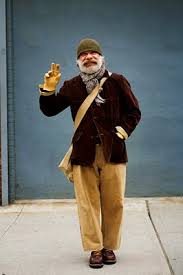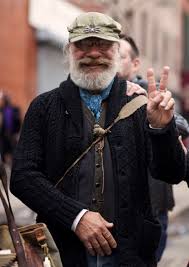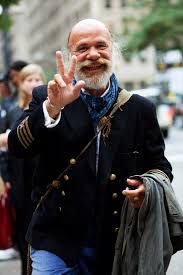Slumdog Millionaire (SM) - (SM) was produced by British companies Film 4 and Celador Films with a budget of 15 million US dollars but even so was still a massive success grossing $240 million and winning 8 oscars. They used technology such as SI - 2K camera's to be able to record on location and create costraphobic, closed in scenes which in return was effective in relating to the audience and narrative. The camera men also had hard drives attached to their back so they could record in flowing scenes, sending information back to a main computer, making production costs cheaper and less time consuming. Warner Independent ( a subsidiary of Warner Brothers) pulled out of distributing the film, but Fox Searchlight rescued the film by re-branding the marketing scheme and concentrating the advertising around the romantic part of the narrative, therefore making the film reach out to a larger audience. They also played the film at film festivals which in conclusion founded the start of advertisement by the search engine TUG, which using widgets and click-links that directed 75,000 people to the SM official webpage allowing them to view teaser and official trailers. This could show British films can be just as successful as Hollywood Blockbusters, but it also may critically show how they cannot compete without the help of Hollywood institutions, in this case the subsidiary of 20th Century Fox, Fox Searchlight.
Kick Ass (KA) - Produced by the British company MARV Films (KA) had an inital budget of $28 million, very large for a British company, and this was because $10.5 million was spent on distributing the film by the North American company Lionsgate. This left a budget of $17.5 million on production, which was almost eqaully spent on above the line costs and below the line costs along with script costs. Kick Ass wanted to successful gain an American Audience along with a British and therefore had a larger budget. Location was one way in which production tryed to entice american audience, with allot of filming taking part in Canada & America along with England, and the actor Nicholas Cage (A very famous actor from America) was extra insentive for the American audience to become attracted to the film. Lionsgate's marketing scheme consisted with the constant release of new posters and teaser trailers that slowly revealed the idea of super heroes without powers. The first batch of posters saw each individual charcter have their own, with their back turned to the camera and the word KICK-ASS was spelt if all posters were placed together, this revealed the name of movie but deliberately didn't reveal allot of information about the characters which got the audience wondering and intrigued about what they could be like. A second batch of posters were then distributed out, revelaing each individual character again but this time concentrating on the colour scheme of each and a front shot, which enticed and attracted the audiences attention, each poster had a url adress that seemingly linked them to the characters own website, instead all of them linkign to the (KA) official website were teaser and full length trailers could be watched. (KA) in return had box office figures of $96 million and won Best British FIlm in the Empire Awards. ($48 million grossed in North America).
Cloverfield (CF) - Renown for its distribution and marketing campaign, (CF) had a very small budget in Hollywood terms of $25 million, but still grossed a total of $170 million thanks to one of the big 6 companies "Paramount". With technological convergance and prelliferation of new technologies (CF) had a massive viral marketing campaign. The film was firstly introduced to audiences on screen before the summer blockbuster "Tranformers" so thousands of people would see it. The teaser trailer used engima codes to entice the audience and only gave one peice of information away, that being the director "JJ Abrams". Therefore when audiences searched "JJ Abrams" they found what other rmovies he had directed and could guess at the genre of movie. The marketing scheme then saw a teaser trailer and a poster introducing the title 1-18-08 which would suggest the day of release. When people searched on the internet the offical 1-18-08 website was found and this daily released pictures of the film and studio, increasing the amount of people intrested and wanting to find out more. Facebook and Myspace profiles were then created for the characters, which like a timeline posted and shared interactred with the audience leading up to the teaser trailer clip, which in return only intrigued more the mass audience interested in the film. A widget was then created to make the audience download to find out information about the characters, they had to register to get this information therefore (CF) marketers could send e-mails and updates about the film and any other projects, gaining a larger audience. A final trailer was created revealing the name Cloverfield and the film was released in Janurary 2008, with total box office figures of $107 million.
Kick Ass (KA) - Produced by the British company MARV Films (KA) had an inital budget of $28 million, very large for a British company, and this was because $10.5 million was spent on distributing the film by the North American company Lionsgate. This left a budget of $17.5 million on production, which was almost eqaully spent on above the line costs and below the line costs along with script costs. Kick Ass wanted to successful gain an American Audience along with a British and therefore had a larger budget. Location was one way in which production tryed to entice american audience, with allot of filming taking part in Canada & America along with England, and the actor Nicholas Cage (A very famous actor from America) was extra insentive for the American audience to become attracted to the film. Lionsgate's marketing scheme consisted with the constant release of new posters and teaser trailers that slowly revealed the idea of super heroes without powers. The first batch of posters saw each individual charcter have their own, with their back turned to the camera and the word KICK-ASS was spelt if all posters were placed together, this revealed the name of movie but deliberately didn't reveal allot of information about the characters which got the audience wondering and intrigued about what they could be like. A second batch of posters were then distributed out, revelaing each individual character again but this time concentrating on the colour scheme of each and a front shot, which enticed and attracted the audiences attention, each poster had a url adress that seemingly linked them to the characters own website, instead all of them linkign to the (KA) official website were teaser and full length trailers could be watched. (KA) in return had box office figures of $96 million and won Best British FIlm in the Empire Awards. ($48 million grossed in North America).
Cloverfield (CF) - Renown for its distribution and marketing campaign, (CF) had a very small budget in Hollywood terms of $25 million, but still grossed a total of $170 million thanks to one of the big 6 companies "Paramount". With technological convergance and prelliferation of new technologies (CF) had a massive viral marketing campaign. The film was firstly introduced to audiences on screen before the summer blockbuster "Tranformers" so thousands of people would see it. The teaser trailer used engima codes to entice the audience and only gave one peice of information away, that being the director "JJ Abrams". Therefore when audiences searched "JJ Abrams" they found what other rmovies he had directed and could guess at the genre of movie. The marketing scheme then saw a teaser trailer and a poster introducing the title 1-18-08 which would suggest the day of release. When people searched on the internet the offical 1-18-08 website was found and this daily released pictures of the film and studio, increasing the amount of people intrested and wanting to find out more. Facebook and Myspace profiles were then created for the characters, which like a timeline posted and shared interactred with the audience leading up to the teaser trailer clip, which in return only intrigued more the mass audience interested in the film. A widget was then created to make the audience download to find out information about the characters, they had to register to get this information therefore (CF) marketers could send e-mails and updates about the film and any other projects, gaining a larger audience. A final trailer was created revealing the name Cloverfield and the film was released in Janurary 2008, with total box office figures of $107 million.



